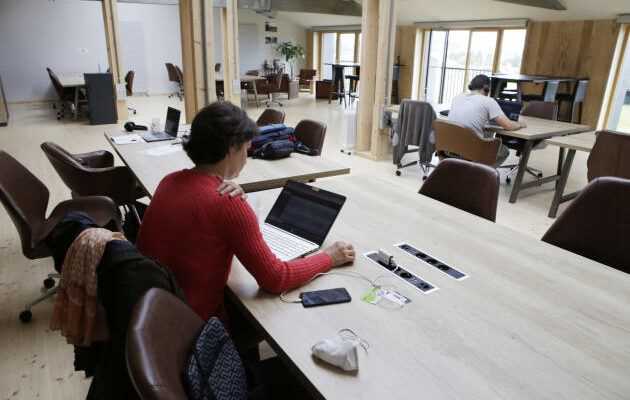ReportingThese new activity spaces combining coworking, digital, culture or crafts are growing exponentially throughout France, and respond to the desire for social links reinforced by the crisis due to Covid-19.
“It is a place of citizenship where everyone can express themselves and take action. But it was difficult for a long time to make people understand what we are, because we go out of the boxes! “ Ophélie Deyrolle, president and co-founder of WIP (for Work in progress), is proud of her baby. In 2016, a group of courageous people restored the old large hall of Colombelles (Calvados), the last vestige of the Société Métallurgique de Normandie, with its refrigerating chimney that looks like a nuclear power plant. Here, ten minutes by car from downtown Caen, we find 3,000 m2 of third-place, refitted in shared offices, local and organic restaurant which is full at lunchtime, workshops, place of representation of a troop of actors disguised as astronauts, or even a radio studio.
Whether they are a coworking space, a connected campus, a shared workshop, a fab lab, a solidarity garage, a cultural wasteland or a service house for the public, third places are exploding, according to the latest report from the France Tiers-Lieux association, published August 27. Their number increased from 1,800 in 2018 to 2,500 in 2021, and will reach 3,500 by the end of 2022.
The attempts to define this strange word, the third way between home and office, are as numerous as the activities that can be found there: spaces where we “Created from the common”, places of “Local mobilization for the general interest”, “Physical spaces to do together” … “It’s a place of sharing, it’s a place where we do things together. We do not smoke the carpet, we create economic and social activity ”, explains Patrick Levy-Waitz, president of the France Tiers-Lieux association, which has been organizing third-place networks and relations with local and regional players since 2019.
Hybrid models
Most of the time, these projects are part of the social and solidarity economy, and many actors gravitate in this ecosystem. The economic models are varied, sometimes hybrid: 62% have opted for associative status, while 26% are SAS or SARL. According to the report, the hexagonal third places are based 50% on public subsidies, and 50% on own revenue. WIP is a cooperative society of collective interest. Its directors hope to soon obtain the approval of a solidarity-based company of social utility. The building is still owned by the local authorities, and WIP has obtained a commercial lease.
You have 65.94% of this article to read. The rest is for subscribers only.
